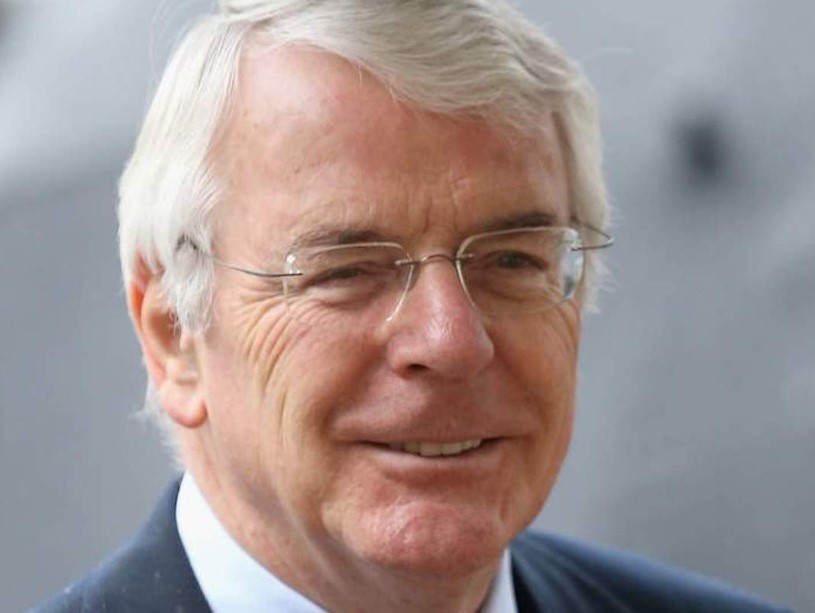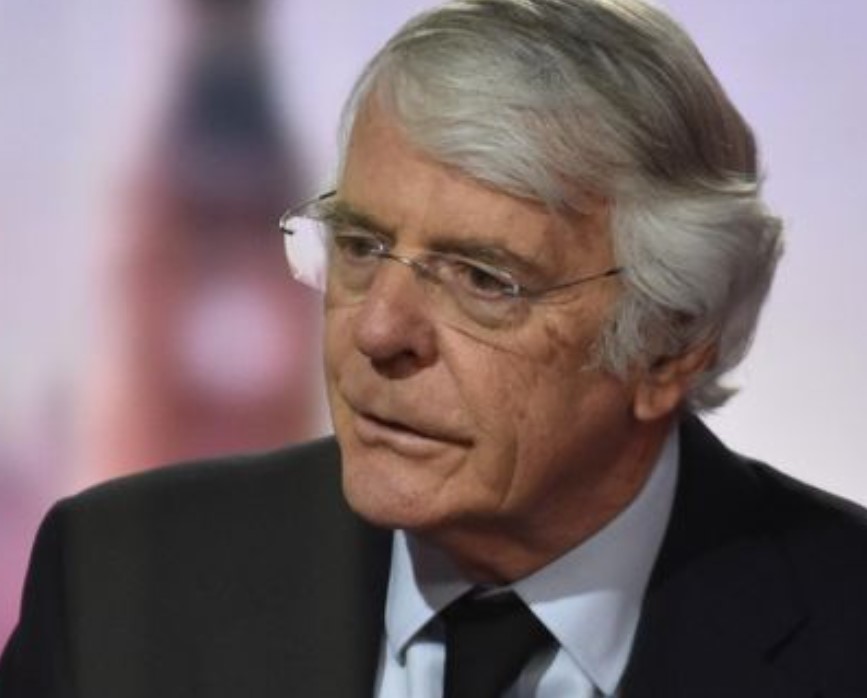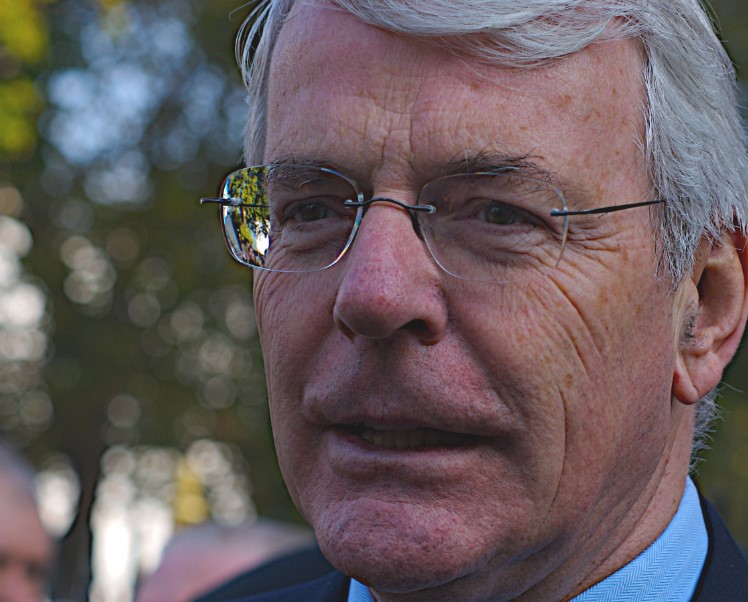
How to Contact John Major: Phone Number, Fanmail Address, Email Address, Whatsapp, House Address
John Major: 8 Ways to Contact Him (Phone Number, Email, House address, Social media profiles)
John Major: Ways to Contact or Text John Major (Phone Number, Email, Fanmail address, Social profiles) in 2021- Are you looking for Amy 2021 Contact details like her Phone number, Email Id, WhatsApp number, or Social media account information that you have reached on the perfect page.
John Major Biography and Career:
Prime Minister of the United Kingdom, John Major served as the party’s leader from 1990 to 1997. He is most known for his time as leader of the Conservative Party in the United Kingdom. After his parents relocated to Brixton, he spent his childhood in Surrey, South East England, where he continued to live. After graduating from high school at the age of 16, John began working as a clerk in London. When his political aspirations became apparent in the late 1950s, the young man quit his employment to join the ‘Conservative Party,’ the youth branch of the ruling Conservative Party.
He also had a brief stint as a teller at a bank. Early on, he showed an interest in politics, becoming a member of the “Young Conservatives” and making public speeches in his early 20s as a result of this. In 1979, he was elected to his first successful election, winning the Huntingdonshire ‘Minister of Parliament (MP) seat. As ‘Chief Secretary to the Treasury,’ he was appointed to the Cabinet in 1987.
In November 1990, he was appointed Prime Minister of the United Kingdom, after the resignation of the previous Prime Minister, Margaret Thatcher. In the end, John was victorious in the 1992 general elections and was able to keep his seat. In 1997, he was replaced as prime minister by Tony Blair, who in turn was superseded as leader of the ‘Conservative Party’ by William Hague. In 2001, John announced his permanent retirement from politics.

John Major’s parents, Gwen Major and Tom Major-Ball welcomed him into the world on March 29, 1943, in St. Helier, Surrey. John’s parents were surprised when he was born. His father was 63 years old at the time of his birth. John grew up with four siblings: his two sisters and two brothers, who were his closest friends.
John’s family was a well-to-do one. His father was a garden decorations company owner who used to be a music hall performer in his younger years. His mother was a stay-at-home mom. A grammar school in the London Borough of Merton with the name of ‘Rutlish School’ was where John went to school.
John’s family company began to falter when he was 12 years old, and the family ultimately opted to relocate to Brixton in search of better employment possibilities. When John was 13 years old, he participated in his first ‘House of Commons’ discussion and was instantly captivated to the realm of politics as a result. He also happened to meet the then-prime minister, Clement Attlee, by chance, which turned out to be a significant turning point in his life.

He completed his secondary education in the late 1950s, earning O-levels in history, English literature, and English language. Later, he pursued his education by correspondence, earning straight A-Levels in economics and maths, as well as in the British constitution.
Despite the fact that he had always shown an interest in the possibility of becoming a politician, his beginnings were very modest. At the time of his recruitment into the Young Conservatives organization, he was still working at an insurance brokerage business, which he despised and eventually departed after many years.

As well as the “London Electricity Board,” he also worked at “The Standard Chartered Bank.” Because of this, he was relocated by the bank to Nigeria, where he was almost killed in an accident in the late 1960s. He joined active politics around the same time and began working with the ‘Conservative Party’ as the chairman of the ‘Housing Committee.’ He was elected to the House of Commons in the same year.
Following his removal from the ‘Housing Committee’ in 1971, he became more actively engaged in the political environment in the United Kingdom (UK). In 1974, he sought to be elected to the ‘Parliament,’ but was unsuccessful in his efforts. Finally, in the 1979 elections, he was elected as the Member of Parliament for Huntingdonshire. Following revisions in the physical boundaries of the constituency, he was elected as the Member of Parliament for the newly constituted Huntingdon constituency in 1983. The next 22 years were spent as a member of the ‘Parliament.
During the Brighton bombings in 1984, John Wakeham, a local member of Parliament, was severely wounded. In his absence, John served as the Member of Parliament for his seat. During the following year, John was appointed to the role of ‘Minister for Pensions and Social Security,’ which he held until his death. John was a young man with a lot of enthusiasm, and the top of the party’s hierarchy was pleased with his efforts. John swiftly advanced through the ranks of the party as a result of his hard work and efficiency.
The title of “Chief Secretary to the Treasury” was bestowed upon him in 1987; two years later, he was elevated to the position of “Foreign Secretary” and subsequently advanced again. Among his responsibilities was accompanying Prime Minister Margaret Thatcher on her official travels to Malaysia, where she met with delegates from Commonwealth nations. The office of “Foreign Secretary” was held by John for just three months before he was elevated to the position of “Chancellor of the Exchequer.”
In 1990, the ‘Conservative Party’ was rocked by discontent, and the party’s leader, Margaret Thatcher, was unable to secure the necessary majority to preserve her position as the party’s leader and as prime minister of the United Kingdom. She was forced to quit in November 1990 after being subjected to a bruising campaign by Michael Heseltine. John was the favored contender to take over as Margaret’s replacement. He was successful in gaining a majority and rose to the position of leader of the ‘Conservative Party.’ As a result, on November 28, 1990, he was appointed Prime Minister of the United Kingdom.
Because he was still relatively young at the time, this was a tremendous burden for John. The party’s top brass, on the other hand, welcomed him with open arms. However, it was subsequently discovered that he was possibly not the most qualified candidate for the position. Nonetheless, he ran in the 1992 general elections and was victorious by a razor-thin margin of less than 1%.
As a member of the ‘European Union,’ Britain was facing a serious crisis, and John was faced with a difficult decision about whether or not to take a firm stance. His party was similarly split into two factions: the “Eurosceptics” and the “Europhiles.” Ultimately, Major chose the middle path, drawing condemnation from both sides of his party’s political spectrum. The second point of criticism was leveled at him for his refusal to sign the “Maastricht Treaty,” which dealt with the establishment of the “European Union.”
As a result, he became an unpopular prime minister, and the British media turned their attention to him, looking for scandals that they ultimately discovered. “Arms to Iraq” and “Cash for Questions” scandals were among the several in which he was embroiled at the time of his death. Meanwhile, John continued to put up significant effort to improve the fundamentals of his nation, including law and order, education, family values, and the police.
By 1995, his reputation had been called into question, and he had become bored of his predicament. The prime minister and the party leader called a leadership election and pledged to resign from their positions if they did not get the needed majority. Despite the fact that he was re-elected and retained his position as prime minister, it seemed that he was dissatisfied with his situation. Nothing went wrong during the remainder of his term as president.
It was John’s inability to be a strong leader that resulted in the ‘Conservative Party’ losing its majority in ‘Parliament,’ and the ‘Conservative Party’ was defeated in 1996. He was only able to hold onto the position of prime minister for a few more months until the 1997 national elections took place.

John Major Profile-
- Famous Name– Sir John Major KG CH
- Birth Sign- Aries
- Date of Birth– 29 March 1943
- Birth Place– St Helier Hospital, Sutton, United Kingdom
- Age -78 years
- Nickname– John Major
- Parents– Father: Tom Major-Ball, Mother: Gwen Major
- Sibling– 2
- Height-1.83 m
- Profession– Politician
Awards:
John Major Phone Number, Email, Contact Information, House Address, and Social Profiles:

Ways to Contact John Major :
1. Facebook Page: @NA
John Major has his Facebook where he gets posts his pics and videos. You can go to his page via the link given above. It is reviewed and we confirm that it is 100% Real Profile of Nancy. You can follow him on his Facebook profile and for that, you can follow the link above.
2. Youtube Channel: NA
John Major had his youtube channel, where he had also uploaded his music videos for his fans. Furthermore, he has gained a million subscribers and has millions of views. If anyone wants to see his uploads and videos, they can use the username link which is given above.
3. Instagram Profile: @NA
John Major also has his Instagram profile where he has gained a million followers and also got around 100k likes per post. If you want to see his latest pics on Instagram then you can visit through the above link.
4. Twitter: @NA
John Major created his Twitter account where he has collected many Followers yet. If you are willing to tweet his then click on the above link. We gave his Twitter handle above, and we have checked and authenticated the given twitter Id. If you want to talk to him via Twitter, you’ll need to use the link above.
5. Phone number: +44 (0)1608 677346
Many phone numbers are leaked on google and the internet in the name of John Major but upon checking we found that none of that numbers actually work. However, when we will found the exact number, we will update here.
6. Fan Mail Address :
John Major
The Ditchley Foundation
Ditchley Park
Enstone
Chipping Norton
Oxon OX7 4ER
UK
7. Email id: NA
8. Website URL: NA
Read Also: How to Contact Theresa May: Phone Number, Fanmail Address, Email Address, Whatsapp, House Address